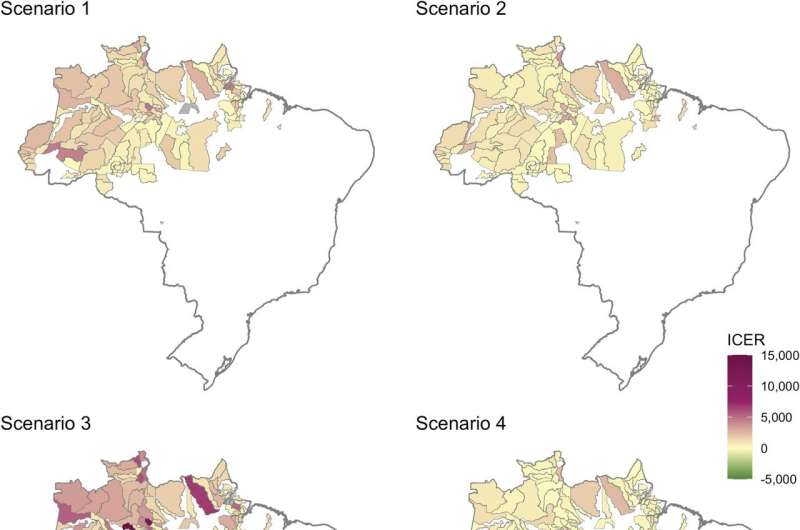This article has been reviewed according to Science X's editorial process and policies. Editors have highlighted the following attributes while ensuring the content's credibility:
fact-checked
peer-reviewed publication
trusted source
proofread
Study finds tafenoquine is a cost-effective treatment option for malaria

A new study led by Menzies School of Health Research has provided further insight into the cost-effectiveness of a new malaria medication, tafenoquine, to treat vivax malaria.
Researchers used a year's worth of vivax malaria disease report data from Brazil and projected the impact over a 10-year period. They compared different types of medications to compare the costs and impact on disease, including the reduction of malaria transmission. This is particularly important as vivax malaria can remain undetected in the liver and reactivate weeks or months after the initial infection.
Primaquine and tafenoquine are the two medications available to treat the liver stage of vivax malaria. Published in PLOS Medicine, the study uncovered that tafenoquine was a cost-effective option when compared to seven days of primaquine treatment. This is despite the requirement to test for glucose-6-phosphate dehydrogenase (G6PD) deficiency prior to tafenoquine being prescribed. G6PD testing before primaquine treatment is also recommended by the World Health Organization as best practice.
The researchers analyzed the use of G6PD screening and one dose of tafenoquine to a seven-day course of low dose primaquine without G6PD screening. Up until recently, the latter was the standard practice for treating the liver stage of vivax malaria in Brazil.
Current data suggests only 62 to 86% of vivax malaria patients in Brazil complete their seven-day primaquine treatment. Therefore, when looking at cost-effectiveness, the researchers also looked at different scenarios of patients completing their primaquine treatment.
They used an economical evaluation model coupled with a disease transmission model to estimate and map their results. They looked at three primaquine treatment scenarios (patients completing 30%, 67% or 90% of the seven-day treatment). The researchers found tafenoquine was the most cost-effective treatment when compared to the three primaquine completion rates.
Incomplete vivax malaria treatment can result in future illness due to parasites that remain dormant in the liver. This can cause a further loss of productivity and greater economic impacts of the disease.
The researchers' findings support the use of tafenoquine after G6PD screening in Brazil and highlight that it would be particularly cost-effective in areas where people are less likely to stick to a primaquine treatment plan. The study also suggested tafenoquine would be even more cost-effective when this treatment is available for children.
Vivax malaria is one of the most common forms of malaria. Finding clinically effective and cost-effective ways to tackle this disease is vital to achieve malaria elimination.
The use of G6PD testing and tafenoquine has been recently adopted as part of Brazil's national treatment policy for adults. These important findings can also help other countries seeking cost-effective malaria treatments.
Associate Professor Angela Devine says, "Malaria causes a significant economic burden in endemic countries. Therefore, understanding the cost-effectiveness of malaria treatments is vital to help support decision-makers to set treatment priorities and allocate resources.
"Both clinically effective and cost-effective treatment helps to limit health expenses, increases productivity and contributes to greater economic development.
"These findings are important in the role of malaria elimination. They take into account both the economic impact of treatment and the impact treatment has on stopping the spread of this disease."
More information: David J. Price et al, Tafenoquine following G6PD screening versus primaquine for the treatment of vivax malaria in Brazil: A cost-effectiveness analysis using a transmission model, PLOS Medicine (2024). DOI: 10.1371/journal.pmed.1004255



















